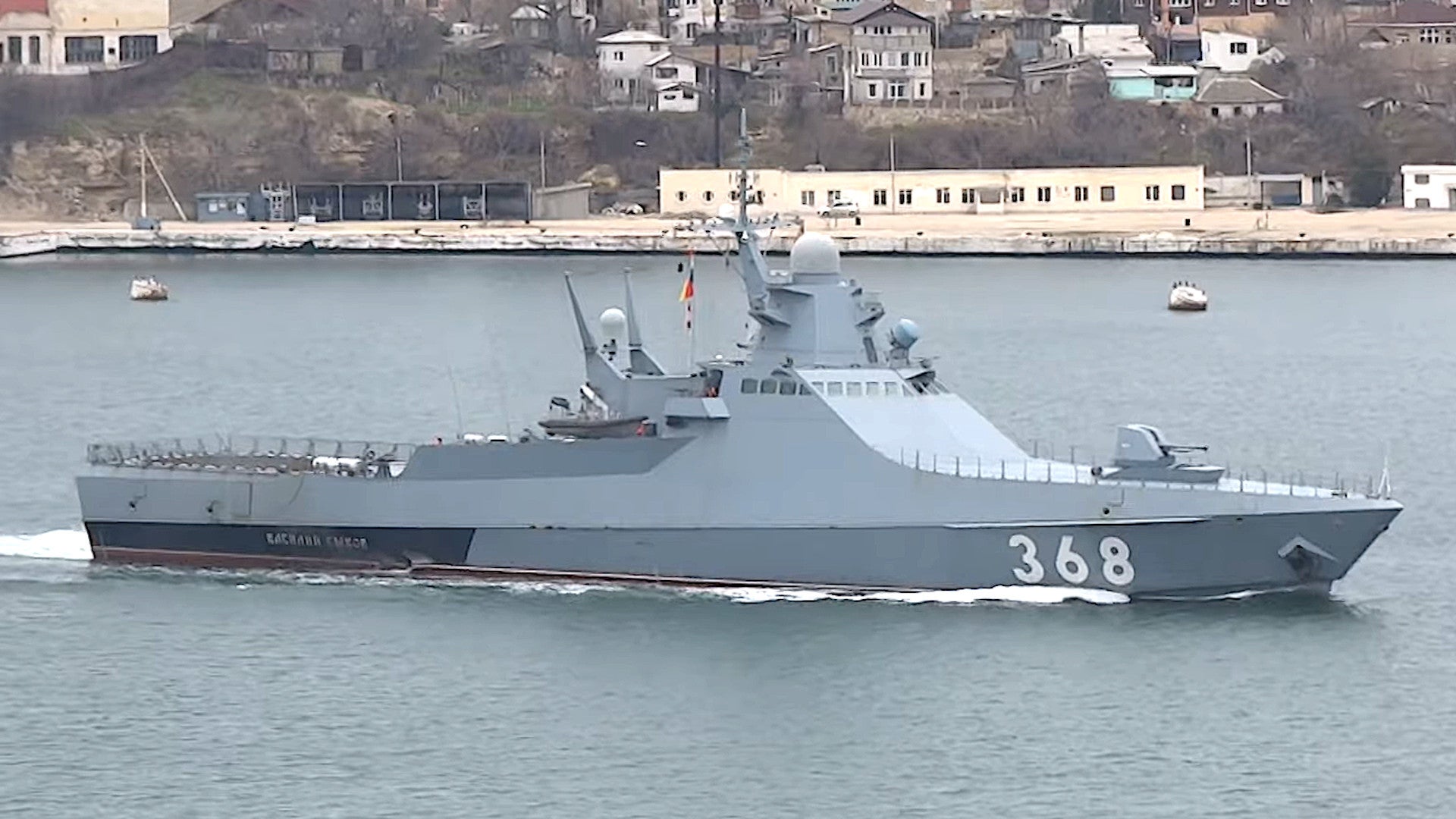In another example of the fog of war and the myths that have emerged around the conflict in Ukraine, video footage and pictures appeared online today showing the Russian Navy’s Project 22160 patrol ship
Vasiliy Bykov sailing into the port of Sevastopol on the Crimean Peninsula without any visible damage. The Ukrainian military reportedly severely damaged, if not sunk this vessel in the Black Sea more than a week ago using unguided artillery rockets fired from the shore. A video purportedly of Vasiliy Bykov burning after the supposed attack may actually show a commercial ship that was seriously damaged by an errant Russian missile early in the conflict and that remains on fire in the Black Sea nearly three weeks later.

The Vasiliy Bykov was the first Project 22160 patrol ship to enter service, being commissioned in 2018. The Russian Navy now has three of these vessels on active duty, all assigned to its Black Sea Fleet, which Russia relocated to Crimea after seizing it from Ukraine in 2014. A fourth Project 22160 ship was undergoing sea trials as of October 2021 and two more are under construction.
The Project 22160s, the design of which you can read more about here, are some of the most modern warships in the Russian Navy today. Destroying one would have represented a significant loss for Russia and it’s not necessarily surprising that Ukrainian authorities were quick to say they had taken out Vasiliy Bykov.
In addition, Vasiliy Bykov had been involved in the Russian military’s assault on Ukraine’s Zmiinyi Island, or Snake Island, in the western Black Sea. The Ukrainian defenders there had attained an almost legendary status after audio emerged of them refusing a demand to surrender and responding instead with the now-iconic phrase “Russian warship, go fuck yourself!” The 13 Ukrainian border guards stationed on Snake Island were initially presumed to have been killed in an ensuing attack, though this later turned out not to be the case, and Ukrainian President Volodymyr Zelenskyy had quickly announced he would honor them as Heroes of Ukraine. So, sinking, or even seriously damaging this ship would have had clear additional propaganda value as a direct act of vengeance.
Still, from the very beginning, there were questions about the likelihood of shore-based short-range, unguided artillery rocket systems being able to hit a relatively small target, at least by ship standards, sailing out in the Black Sea. Subsequent reports said that the Ukrainian armed forces had pulled this off by using small patrol boats to lure the Russian ship toward the shore until it was within range. Video footage showing a burning vessel accompanied the claims as evidence of the attack at least having successfully damaged Vasiliy Bykov.
There is the possibility that the Russian Navy could have repainted one of the other two Project 22160 patrol ships, either the Dmitriy Rogachev or the Pavel Derzhavin, to conceal the loss of Vasily Bykov. However, comparisons between the imagery of the ship today and of it from before March 7 suggest that this is not the case.
Ukrainian forces may have mistaken Vasily Bykov for the Dmitriy Rogachev or the Pavel Derzhavin. A picture of Dmitriy Rogachev in port at Sevastopol, alongside the Ukrainian search and rescue ship Sapphire, which was captured during the Snake Island operation, had emerged online on March 11, but that could have been taken days earlier. Pavel Derzhavin appears to have been last seen in the Sea of Azov, north of the Black Sea, on or around February 20, prior to the Kremlin launching its invasion of Ukraine.
There’s no indication, one way or another, that the video of the burning ship offshore that is associated with the claimed attack on Vasily Bykov was fabricated. In fact, it seems more likely than not that the video, at its core, is legitimate, though it may show another vessel on fire.
On February 25, a day after Russia’s invasion of Ukraine began, the Moldovan-flagged chemical tanker MV Millennial Spirit
was reportedly struck by a Russian missile in the western end of the Black Sea some 18 miles southeast of the Ukrainian port city of Odesa. That incident reportedly left two members of the ship’s 12-person crew, all of who were Russian nationals, seriously injured. Video footage, seen below, subsequently emerged showing the ship ablaze and emitting the same kind of thick black smoke seen in the video purportedly of the damaged Vasiliy Bykov.

There was speculation within days of the Ukrainian military’s claims that this might have been a case of mistaken identity.
This potentiality is further bolstered by the fact that, while it’s not immediately clear what Millennial Spirit had in its tanks when it was struck, whatever it was has left the ship burning ever since. The position of what is left of the vessel has been well established based on the data that its Automatic Identification System (AIS) transponder continued to send out for days after it was struck. A satellite image available through Planet Labs that was taken today and that The War Zone has reviewed clearly shows the vessel still on fire 20 days later.
All told, Vasiliy Bykov‘s claimed destruction at the hands of a Ukrainian rocket artillery battery is exactly the kind of morale-boosting story of plucky underdog determination and resourcefulness that, especially with the additional Snake Island connection, one might want to be true. However, the ship’s apparent reappearance in Crimea unscathed suggests that it is not.
The origin of the story about the strike on the Vasiliy Bykov can probably be chalked up to the fog of war, which hangs very heavily over Russia’s invasion of Ukraine. Hopefully, we will get a better idea of the current disposition of the two other vessels in the class that are operating around the Black Sea region so we can put this to bed once and for all.
Contact the author: joe@thedrive.com
